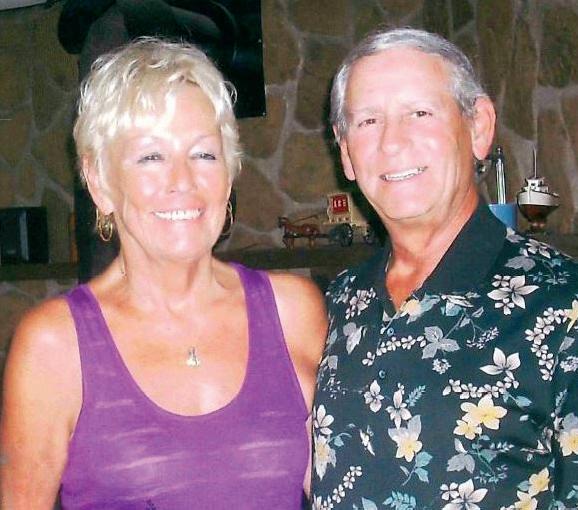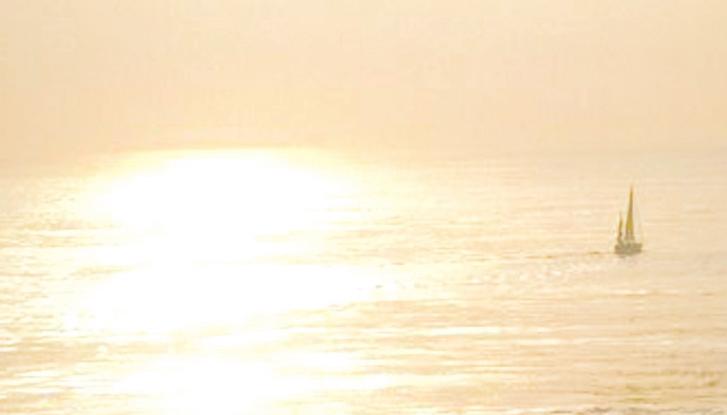
5 minute read
Obituaries
Barry Lee Friedman, 84 years old, died Nov. 12, 2022 Sandra Marie Friedman, 81 years old, died April 4, 2022 “Just another day in paradise”
Barry and Sandie were their best selves when they were at the beach.
They shared a love story that started decades ago. No one could have asked for better parents or better friends. With numerous family members and three children, Douglas, Randi, and preceded in death by a daughter, Sheri. They will be dearly missed.
So very special to them was their “beach family.”
May you rest in peace together with the sun on your faces and your toes in the sand. I love you - Randi Continued from Page 53 attend, except for academy employees and the press.
Those who were fortunate to receive tickets had to sign an affidavit stating that they lived inside the radius and that they would not resell the tickets. Because of this, there wasn’t the usual complement of “brass” that is normally seen at an Army/Navy game, as they had a war to fight!
But Rear-Adm. Emery S. Land, chairman of the United States Maritime Commission, Naval Academy class of 1902, who had never missed an Army/Navy game, used a bit of subterfuge to attend. He appealed to Walter Okeson, chairman of the Football Rules Committee, and got an appointment on the chains crew!
Army, coached by Hall of Famer Red Blaik, after winning its first four games, was ranked as high as 8th, but after losing its next two, to Penn and Notre Dame, it fell out of the rankings for good. This was Blaik’s second year as Army’s head coach. He would coach Army for another 16 years, compiling a 121-32-10 record with two consecutive National Championships, 1944-45.
The only reason that it was not three was because of a scoreless tie with #2 ranked Notre Dame, in a packed Yankee Stadium, in 1946. In 1942, Army finished with a record of 6 - 3.
Navy’s coach, LCDR John E. Whelchel, having served as an assistant to “Swede” Larson, was in his first year as head coach of the Midshipmen. He would finish the season with a 5-4 record, but the next year, Navy finished with an 8-1 record and won the Lambert Trophy, emblematic of Eastern college football supremacy.
That year, Navy lost only to #1 ranked Notre Dame, and finished 4th in the rankings. Both men were alumni of their schools and both played football at their alma maters, with Blaik earning Third Team AllAmerican honors in 1919.
To even things and to give the Army team a chance — even though Army was a 16 - 5 favorite — junior and senior Midshipmen were ordered to sit on Army’s side of the stadium and cheer for their opponent. They took instruction from cheer books sent down from West Point.
But, even with this assistance, the Army’s cheering section was not as lusty as the Navy’s. In addition, the Midshipmen learned that a local farmer, John Bausum, owned a mule named “Jimmy,” which the Midshipmen brought to the game to inspire the Army, while their goat, Billy-O, did the same for their team. The Army’s mule was nicknamed “LendLease!”
The traditional pre-game pep rally was held the night before the big game. But, because of wood rationing, the traditional bonfire was not present. On the day of the game, agents of the federal Office of Price Administration checked each car to ensure adherence to the 10-mile radius restriction.
The president telegrammed both teams, saying that, “...the graduates of the two academies are engaged, shoulder to shoulder, in the grim game of war. Throughout the world, they are knitting … the ties of comradeship which they first formed on the playing fields of the homeland.”
The contest was broadcast by three national radio networks and by shortwave, to servicemen worldwide. Forty million Americans listened to the game on the radio. Films of the game were sent to American bases the world over.
As the immortal Grantland Rice wrote in his syndicated column that day, “Whether it be the Severn or the Seine, by Old Man River or the Meuse or Marne, the Thames or the Missouri, when Army and Navy meet there is always a football game worth looking at.” And it certainly was!
After a scoreless first period, reserve freshman halfback Joe Sullivan scored on a half-yard run, which had been set up by a 28-yard punt return by Gordon Studer to the Army 4-yard line.
Midway through the third quarter, Hills Hume intercepted an Army pass on the Cadet 21-yard line. On the third play after the interception, right halfback Ben Martin took a pass at the five from quarterback Harold “Al” Hamberg, and ran it in for Navy’s second touchdown. With the two extrapoint kicks, that was all the Annapolis eleven needed to best their rivals.
Hume sealed the victory with another interception of Army reserve quarterback Doug Kenna at the Navy seven-yard line. For the game, Navy ball carriers amassed 240 yards on the ground.
The Army team was led by AllAmerican tackle, and future fighter ace and general, Robin Olds, who would lose two front teeth in the game. He finished the game. He was joined on the All-American team by tackle Francis E. Merritt, team captain halfback Henry Mazur, and end James Kelleher.
Navy was led by its captain, left halfback, Alan Camaron, and left end Albert Channell, father of local resident of the same name. The following year, Channell would captain the 4th ranked Lambert Trophy winning team.
Next week: NEW GUINEA
Mr. Wimbrow writes from Ocean City, Maryland, where he practices law representing those persons accused of criminal and traffic offenses, and those persons who have suffered a personal injury through no fault of their own. He can be contacted at: wimbrowlaw@gmail.com.

$1,445.







